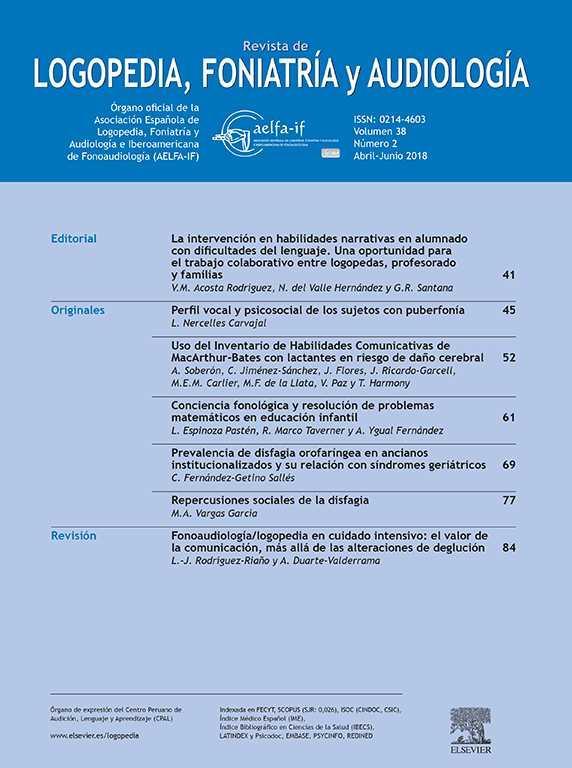During morphology acquisition, children must learn to segment and associate the morphemes of a word to its meaning or grammatical function, despite the complex morphological variability children may encounter in their linguistic environment. The present study explores the ability of 9–12-month-old infants to segment a morpheme-like syllable of varying pseudowords and associate it to a novel object.
Participants and methodThirty-nine Spanish-learning infants participated in an experiment involving a preferential looking task. During each of five training trials per category, infants were presented to one of two novel objects while simultaneously heard two instances of pseudowords with a common morpheme-like segment either at the beginning or the end of the pseudoword (e.g., /tabi/, /babi/, for object 1; or /sato/, /same/, for object 2). Children were then tested in five trials per object. The two trained objects were presented side-by-side while infants heard new pseudowords that followed the pattern of the pseudowords that were heard during training.
ResultsResults show an effective association between a referent and a group of pseudowords with a repeating morpheme-like segment. This association is observed both with beginning and final segments.
ConclusionsThese findings show infants’ basic abilities for the processing of morphology at an earlier age than it has been suggested. The potential influence of morphologically rich languages such as Spanish is considered.
Durante la adquisición de la morfología, los niños deben aprender a segmentar y a asociar los morfemas de una palabra a su significado o función gramatical, a pesar de la compleja variabilidad morfológica que los niños pueden encontrar en su entorno lingüístico. El presente estudio explora la capacidad de los bebés de 9 a 12 meses para segmentar una sílaba tipo morfema de varias palabras y asociarla a un objeto novedoso.
Participantes y métodoTreinta y nueve bebés aprendices del español participaron en un experimento que implicaba una tarea de preferencia de mirada. Se realizaron cinco ensayos de entrenamiento por categoría, en los que se presentaba uno de dos objetos novedosos, mientras que simultáneamente escuchaban dos instancias de palabras con un segmento tipo morfema común (e.g., /tabi/, /babi/, para el objeto 1, o /sato/, /same/, para el objeto 2). Luego, los niños fueron evaluados en cinco ensayos de prueba por categoría. Los dos objetos del entrenamiento aparecían, uno al lado del otro, mientras escuchaban nuevas palabras que seguían el patrón de las palabras escuchadas durante el entrenamiento.
ResultadosLos resultados muestran una asociación efectiva entre un referente y un grupo de palabras con un segmento repetitivo similar a un morfema.
ConclusionesEstos hallazgos muestran las habilidades básicas de los bebés para el procesamiento de la morfología a una edad más temprana de lo que se había sugerido. Se considera la potencial influencia de lenguas morfológicamente ricas, como el español.














